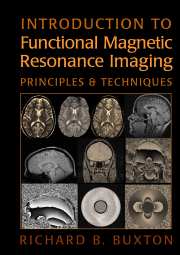1 - Energy Metabolism in the Brain
from IA - Introduction to Functional Neuroimaging
Published online by Cambridge University Press: 05 September 2013
Summary
METABOLIC ACTIVITY ACCOMPANIES NEURAL ACTIVITY
Mapping Brain Activity
The goal of understanding the functional organization of the human brain has motivated neuroscientists for well over 100 years, but the experimental tools to measure and map brain activity have been slow to develop. Neural activity is difficult to localize without placing electrodes directly in the brain. Fluctuating electric and magnetic fields measured at the scalp provide information on electrical events within the brain. From these data the location of a few sources of activity can be estimated, but the information is not sufficient to produce a detailed map of the pattern of activation. However, precise localization of the metabolic activity that follows neural activity is much more feasible and forms the basis for most of the functional neuroimaging techniques is use today, including positron emission tomography (PET) and functional magnetic resonance imaging (fMRI). Although comparatively new, fMRI techniques are now a primary tool for basic studies of the organization of the working human brain, and clinical applications are growing rapidly.
In 1890, William James published The Principles of Psychology, a landmark in the development of psychology as a science grounded in physiology (James, 1890). The possibility of measuring changes in brain blood flow associated with mental activity clearly lay behind the experiment performed by Angelo Mosso and recounted by James in the quotation at the beginning of Part IA.
Information
- Type
- Chapter
- Information
- Introduction to Functional Magnetic Resonance ImagingPrinciples and Techniques, pp. 4 - 21Publisher: Cambridge University PressPrint publication year: 2002
